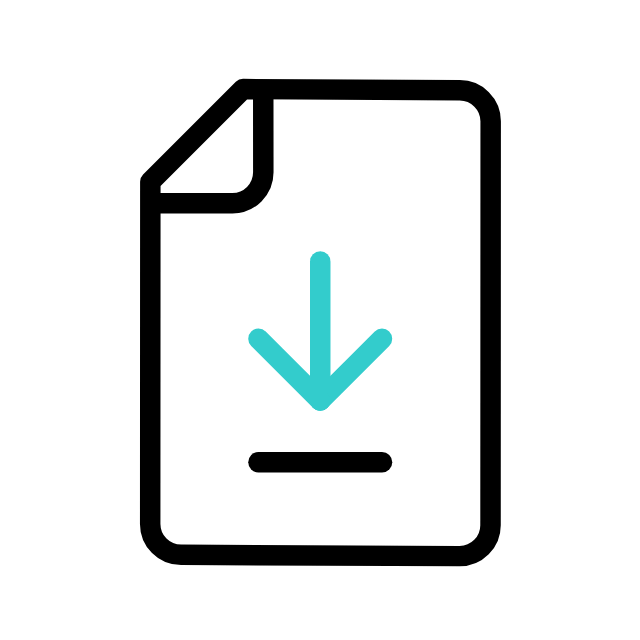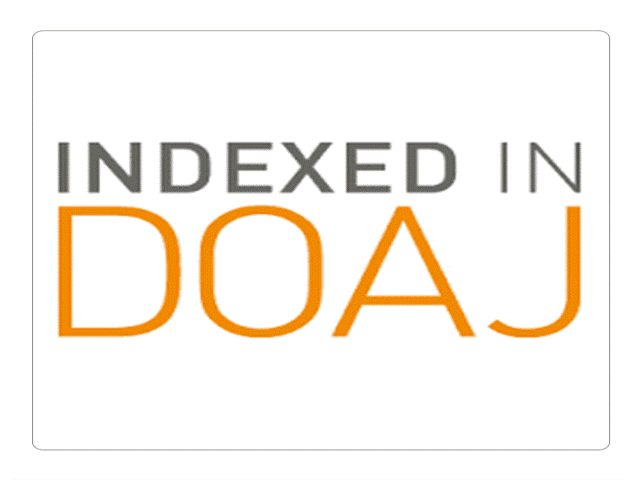A PRUNED VGG16 WITH HYBRID PREPROCESSING AND DATA BALANCING FOR ROBUST AND INTERPRETABLE LUNG CANCER CLASSIFICATION
DOI:
https://doi.org/10.25271/sjuoz.2025.13.4.1597Keywords:
Lung cancer, Deep Learning (DL), Computed Tomography (CT), Transfer Learning, Hybrid Preprocessing, VGG16, Synthetic Minority Oversampling Technique (SMOTE), Grad-CAMAbstract
Lung cancer is the most common and deadliest type of cancer globally, creating a critical need for diagnostic tools that are not only accurate but also practical for clinical integration. This study introduces a robust, computationally efficient, and interpretable deep learning framework using Computed Tomography (CT) images to address limitations in existing models, such as high computational costs, poor data quality, and a lack of transparency. Our approach utilizes a VGG16 architecture, streamlined through structured pruning, which reduced the parameter count from 138.3M to 26.6M without compromising performance. We developed a hybrid pipeline with dual filtering and adaptive CLAHE to enhance image quality, while data diversity and imbalance were mitigated using hybrid augmentation and SMOTE. The model was trained with a rigorous strategy, including four-fold cross-validation and dual-phase fine-tuning with a dynamic learning rate, ensuring stable convergence. On a primary single-source dataset, the model achieved a test accuracy of 0.9910 and a Matthews Correlation Coefficient (MCC) of 0.9845. To validate real-world applicability, the framework was tested on a large multi-source dataset, demonstrating strong generalization with a balanced accuracy of 0.9693 and an MCC of 0.9427. Model interpretability was confirmed using Grad-CAM visualizations to highlight clinically relevant regions. This framework provides a highly accurate, computationally efficient, and generalizable solution with significant potential for clinical deployment as a reliable diagnostic aid
Downloads
References
Al Najjar, Y. (2024). Comparative analysis of image quality assessment metrics: MSE, PSNR, SSIM, and FSIM. International Journal of Science and Research, 13(3), 110–114. https://doi.org/10.21275/SR24302013533
Alheeti, K. M. A., Al-Shouka, T. T., Majeed, S. H., & Ahmed, A. A. (2024). Lung cancer detection using machine learning and deep learning models. In 2024 21st International Multi-Conference on Systems, Signals & Devices (SSD) (pp. 63–69). IEEE. https://doi.org/10.1109/SSD61670.2024.1054950.
Al-Shouka, T. T., & Alheeti, K. M. A. (2023). A transfer learning for intelligent prediction of lung cancer detection. In 2023 Al-Sadiq International Conference on Communication and Information Technology (AICCIT) (pp. 54–59). IEEE. https://doi.org/10.1109/AICCIT57614.2023.10217967.
Al-Yasriy, H. F., Al-Husieny, M. S., Mohsen, F. Y., Khalil, E. A., & Hassan, Z. S. (2020). Diagnosis of lung cancer based on CT scans using CNN. IOP Conference Series: Materials Science and Engineering, 928, 032033. https://www.kaggle.com/datasets/hamdallak/the-iqothnccd-lung-cancer-dataset/data.
Anand, R., Rao, N., & Sumukh, D. (2022). Lung cancer detection and prediction using deep learning. International Journal of Engineering Applied Sciences and Technology.
Anusha, M., & Reddy, D. S. (2023). Lung carcinoma diagnosis and classification using deep learning. 2023 4th International Conference for Emerging Technology (INCET), 1–4. IEEE. https://doi.org/10.1109/INCET57972.2023.10170615.
Ardila, D., Kiraly, A. P., Bharadwaj, S., Choi, B., Reicher, L., Peng, L., Tse, D., Etemadi, M., Ye, W., Corrado, G. S., Naidich, D. P., & Shetty, S. (2019). End-to-end lung cancer screening with three-dimensional deep learning on low-dose chest computed tomography. Nature Medicine, 25(6), 954–961. https://doi.org/10.1038/s41591-019-0447-x.
Benamara, Z., Zehani, S., & Zitouni, A. (2024). The effect of fully connected layers in different pre-trained CNN architectures on the enhancement of lung cancer classification. In 2024 8th International Conference on Image and Signal Processing and their Applications (ISPA) (pp. 1–6). IEEE. https://doi.org/10.1109/ISPA59904.2024.10536830.
Bray, F., Laversanne, M., Sung, H., Ferlay, J., Siegel, R. L., Soerjomataram, I., & Jemal, A. (2024). Global cancer statistics 2022: GLOBOCAN estimates of incidence and mortality worldwide for 36 cancers in 185 countries. CA: A Cancer Journal for Clinicians, 74(3), 229–263. https://doi.org/10.3322/caac.21834.
Chang, Y., Jung, C., Ke, P., Song, H., & Hwang, J. (2018). Automatic contrast-limited adaptive histogram equalization with dual gamma correction. IEEE Access, 6, 11782–11792. https://doi.org/10.1109/ACCESS.2018.2797872
Chattopadhay, A., Sarkar, A., Howlader, P., & Balasubramanian, V. N. (2018, March). Grad-CAM++: Generalized gradient-based visual explanations for deep convolutional networks. In 2018 IEEE Winter Conference on Applications of Computer Vision (WACV) (pp. 839–847). IEEE. https://doi.org/10.1109/WACV.2018.00097.
Gupta, D., Dawn, S., & others. (2023). Detection and staging of lung cancer from CT scan images by deep learning. In 2023 International Conference on Disruptive Technologies (ICDT) (pp. 274–278). IEEE. https://doi.org/10.1109/ICDT57929.2023.10151194.
Ghosh, R., Ahamed, A., Sadhukhan, B., & Das, N. (2023). Lung nodule classification using MobileNet transfer learning. In 2023 9th International Conference on Smart Computing and Communications (ICSCC) (pp. 290–295). IEEE. https://doi.org/10.1109/ICSCC59169.2023.10335043.
Gugulothu, V. K., & Balaji, S. (2024). RETRACTED ARTICLE: An early prediction and classification of lung nodule diagnosis on CT images based on hybrid deep learning techniques. Multimedia Tools and Applications, 83, 1041–1061. https://doi.org/10.1007/s11042-023-15802-2
Ibrahim, W. R., & Mahmood, M. R. (2023). Classified Covid-19 By Densenet121-Based Deep Transfer Learning From Ct-Scan Images. Science Journal of University of Zakho, 11(4), 571 –https://doi.org/10.25271/sjuoz.2023.11.4.1166.
Jassim, O. A., Abed, M. J., & Saied, Z. H. (2024). Deep learning techniques in the cancer-related medical domain: A transfer deep learning ensemble model for lung cancer prediction. Baghdad Science Journal, 21(3). https://doi.org/10.21123/bsj.2023.8340.
Klangbunrueang, R., Pookduang, P., Chansanam, W., & Lunrasri, T. (2025, February). AI-powered lung cancer detection: Assessing VGG16 and CNN architectures for CT scan image classification. Informatics, 12(1), 18. MDPI. https://doi.org/10.3390/informatics12010018.
Kumaran, Y. S., Jeya, J. J., T. R, M., Khan, S. B., Alzahrani, S., & Alojail, M. (2024). Explainable lung cancer classification with ensemble transfer learning of VGG16, ResNet50 and InceptionV3 using Grad-CAM. BMC Medical Imaging, 24(1), 176. https://doi.org/10.1186/s12880-024-01345-x.
Leiter, A., Veluswamy, R. R., & Wisnivesky, J. P. (2023). The global burden of lung cancer: Current status and future trends. Nature Reviews Clinical Oncology, 20, 624–639. https://doi.org/10.1038/s41571-023-00798-3.
Murad, S. H., Awlla, A. H., & Moahmmed, B. T. (2023). Prediction lung cancer based critical factors using machine learning. Science Journal of University of Zakho, 11(3), 447–452. https://doi.org/10.25271/sjuoz.2023.11.3.1105
National Lung Screening Trial Research Team (NLST). (2011). Reduced lung-cancer mortality with low-dose computed tomographic screening. New England Journal of Medicine, 365(5), 395–409. https://doi.org/10.1056/NEJMoa1102873.
Naseer, I., Akram, S., Masood, T., Rashid, M., & Jaffar, A. (2023). Lung cancer classification using modified U-Net based lobe segmentation and nodule detection. IEEE Access, 11, 60279–60291. https://doi.org/10.1109/ACCESS.2023.3285821.
Park, S., Park, H., Lee, S. M., Kim, H., & Goo, J. M. (2022). Application of computer-aided diagnosis for Lung-RADS categorization in CT screening for lung cancer: Effect on inter-reader agreement. European Radiology, 32(2), 1054–1064. https://doi.org/10.1007/s00330-021-08202-3
Ravindra, C., Nalband, A. H., Kumar, G., Basheer, S., & Ravindra, M. (2024). From pixels to prognosis: A deep dive into lung cancer subtype classification using transfer learning. In 2024 IEEE International Conference on Contemporary Computing and Communications (InC4) (Vol. 1, pp. 1–6). IEEE. https://doi.org/10.1109/InC460750.2024.10649168.
Rodrigues, R., Lévêque, L., Gutiérrez, J., Jebbari, H., Outtas, M., Zhang, L., Chetouani, A., Al-Juboori, S., Martini, M. G., & Pinheiro, A. M. G. (2024). Objective quality assessment of medical images and videos: Review and challenges. Multimedia Tools and Applications, 1–34. https://doi.org/10.1007/s11042-024-20292-x.
Sangeetha, M., Devi, R. M., Gunasekaran, H., Venkatesan, R., Ramalakshmi, K., & Murugesan, P. (2023). Deep residual learning for lung cancer nodules detection and classification. In 2023 7th International Conference on Computing Methodologies and Communication (ICCMC) (pp. 907–912). IEEE. https://doi.org/10.1109/ICCMC56507.2023.10083783.
Singh, A., & Kamath, S. (2024). Preprocessing of CT scans for lung cancer detection. In 2024 4th International Conference on Intelligent Technologies (CONIT) (pp. 1–4). IEEE. https://doi.org/10.1109/CONIT61985.2024.10626594.
Tandon, R., Agrawal, S., Chang, A., & Band, S. S. (2022). VCNet: Hybrid deep learning model for detection and classification of lung carcinoma using chest radiographs. Frontiers in Public Health, 10, 894920. https://doi.org/10.3389/fpubh.2022.894920.
World Health Organization (WHO). (2023). Lung cancer (Report No. WHO/2023/LC_FS). https://www.who.int/news-room/fact-sheets/detail/lung-cancer.
Published
How to Cite
Issue
Section
License
Copyright (c) 2025 Marwa Salih Ramadhan, Mohammed Ahmed Shakir

This work is licensed under a Creative Commons Attribution 4.0 International License.
Authors who publish with this journal agree to the following terms:
- Authors retain copyright and grant the journal right of first publication with the work simultaneously licensed under a Creative Commons Attribution License [CC BY-NC-SA 4.0] that allows others to share the work with an acknowledgment of the work's authorship and initial publication in this journal.
- Authors are able to enter into separate, additional contractual arrangements for the non-exclusive distribution of the journal's published version of the work, with an acknowledgment of its initial publication in this journal.
- Authors are permitted and encouraged to post their work online.








